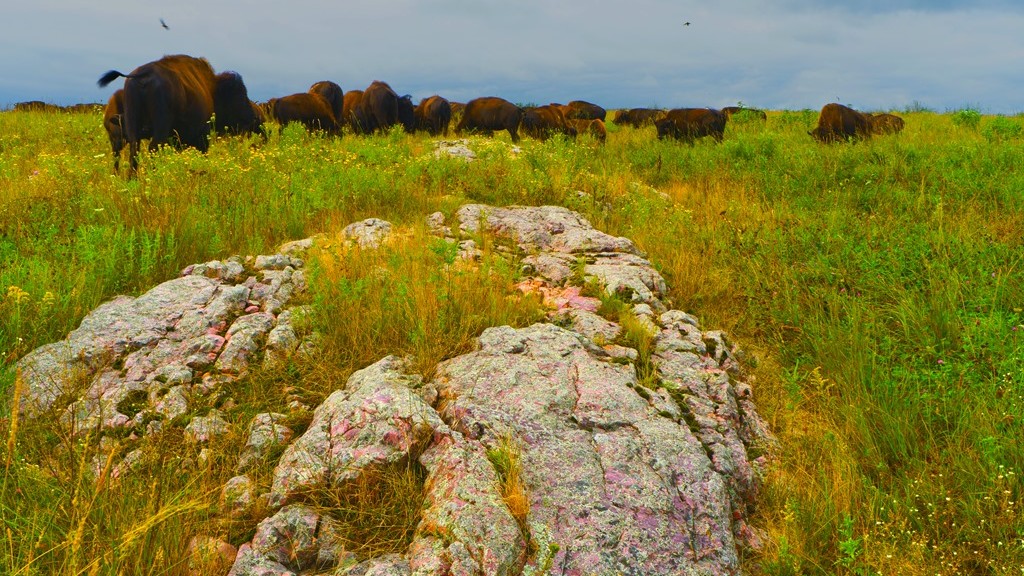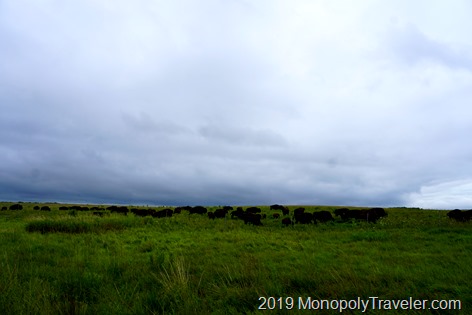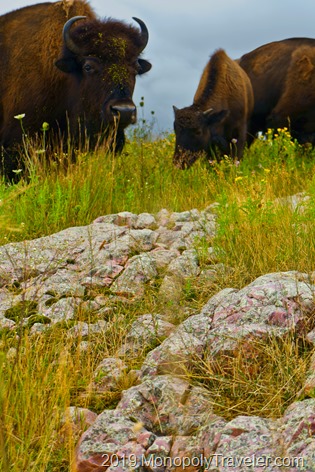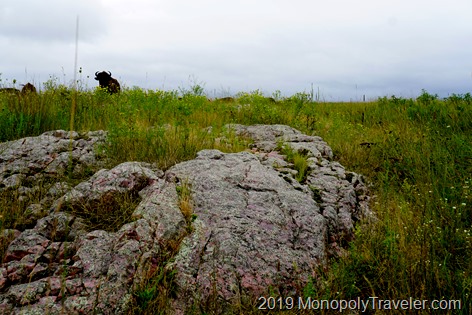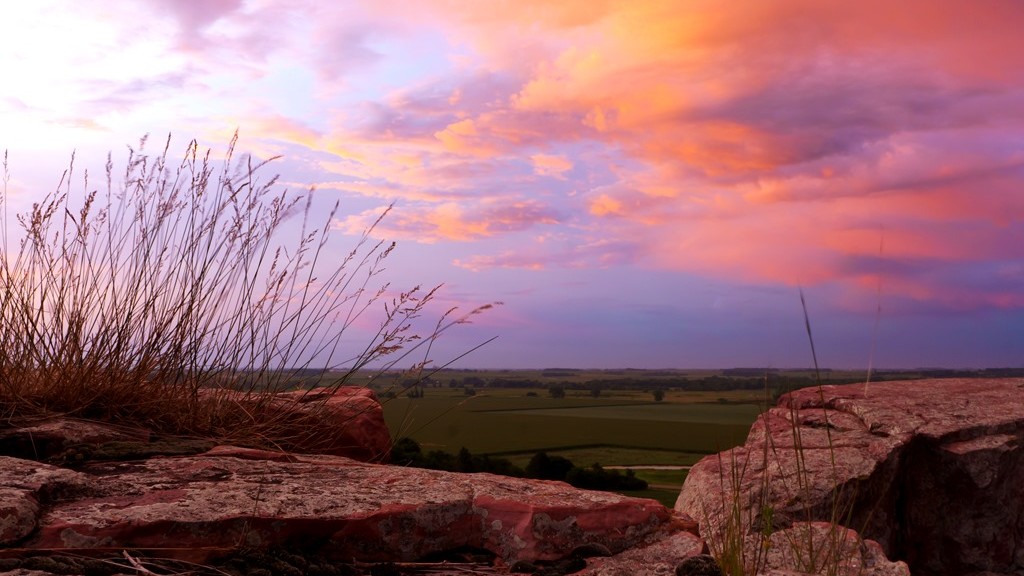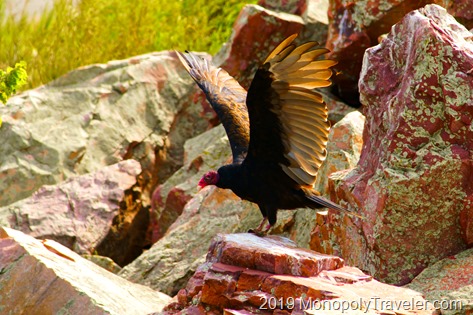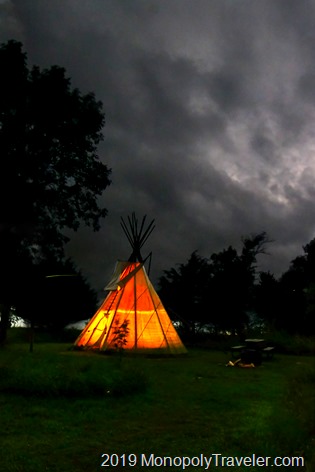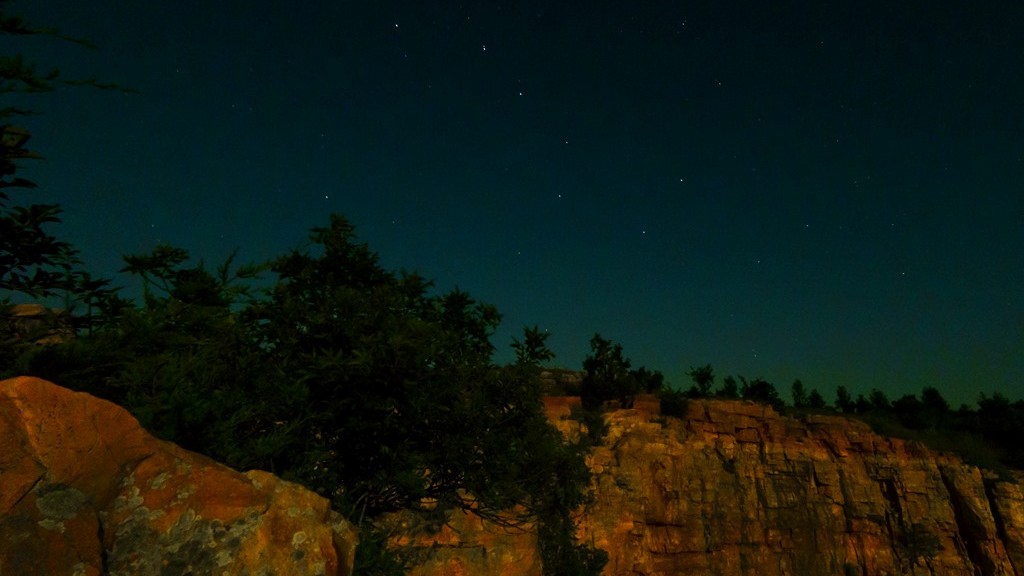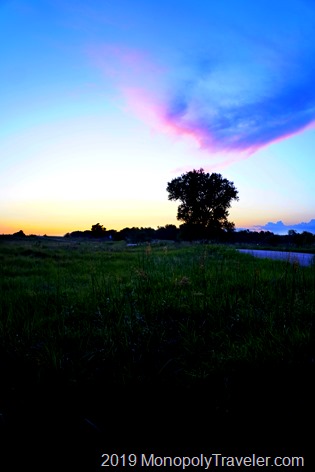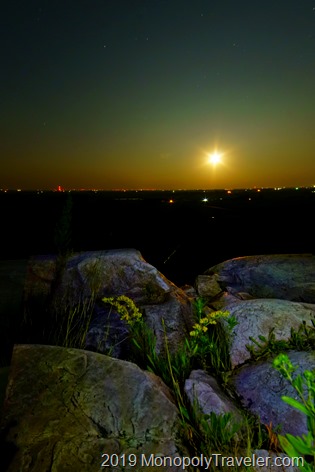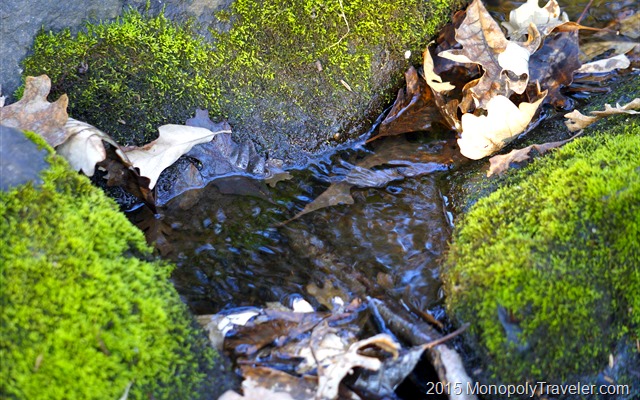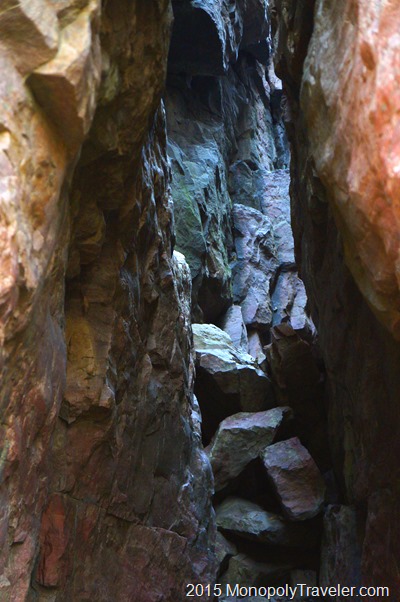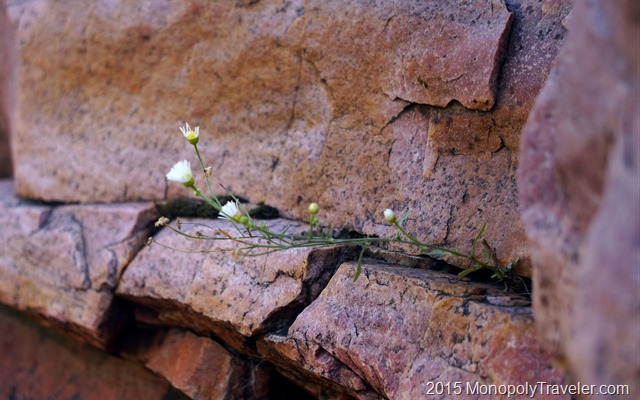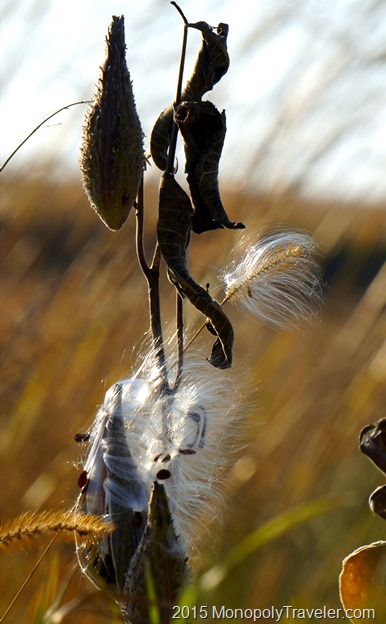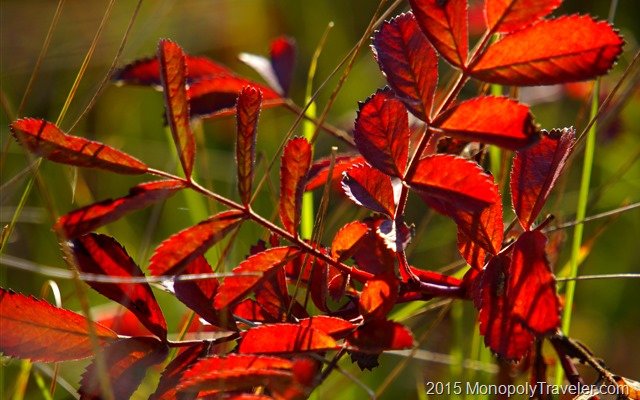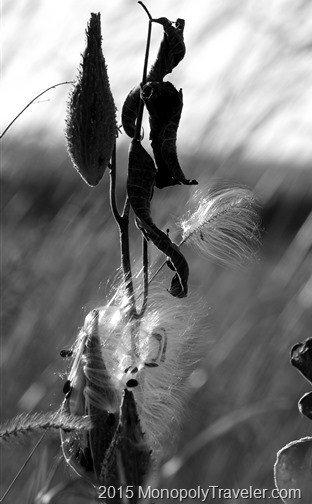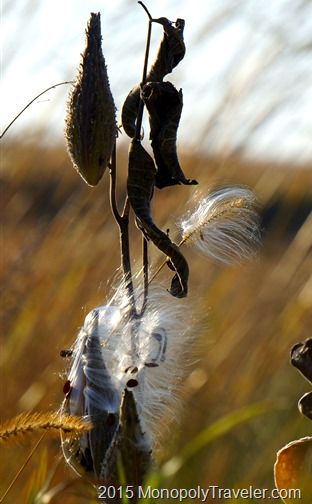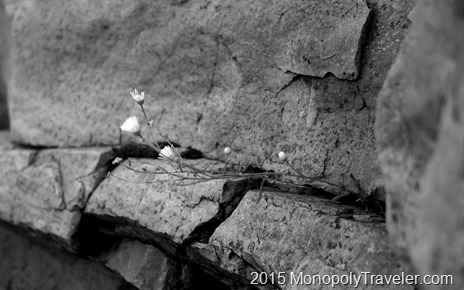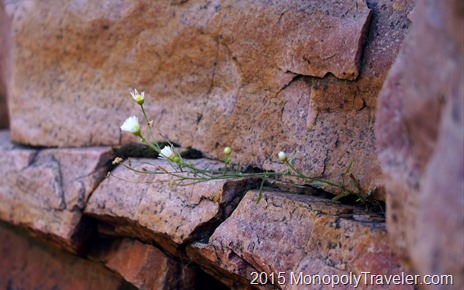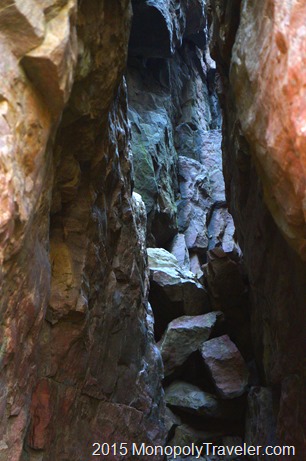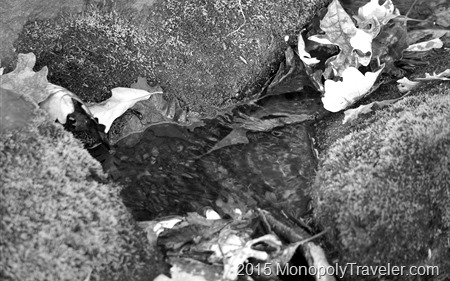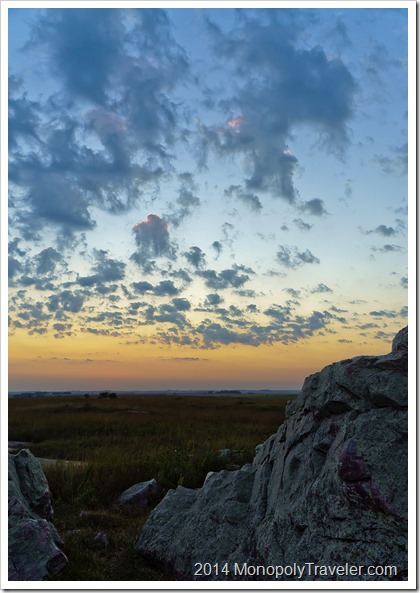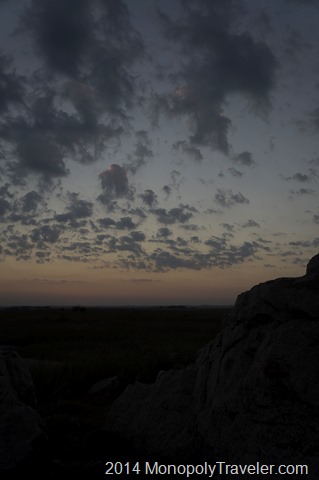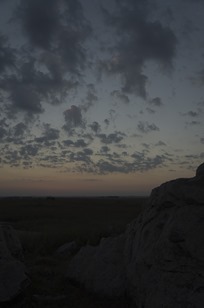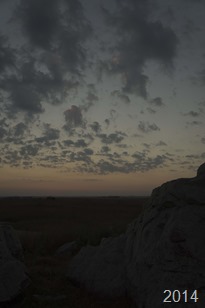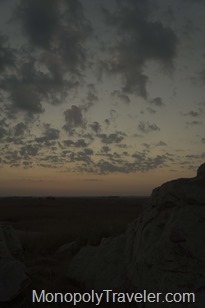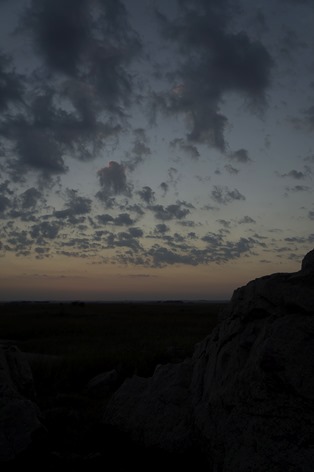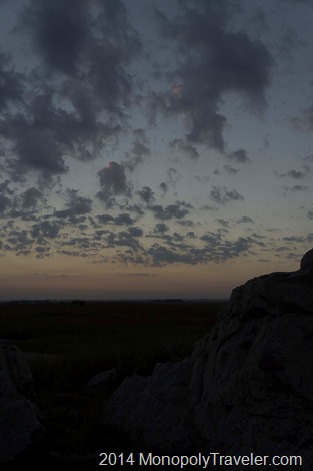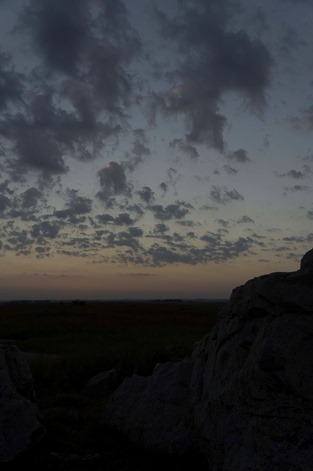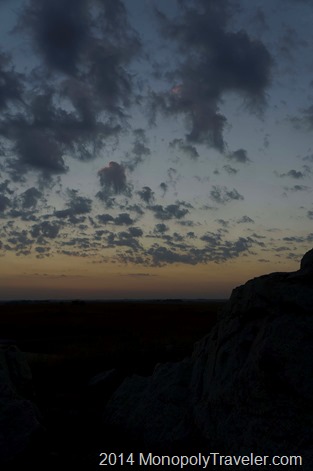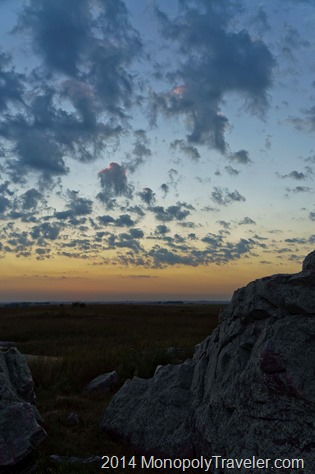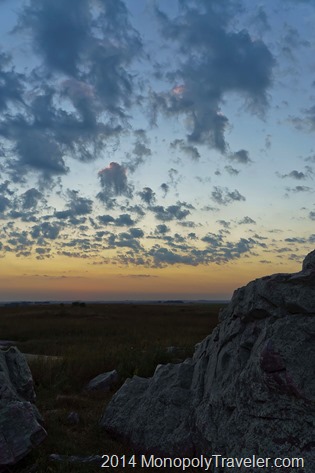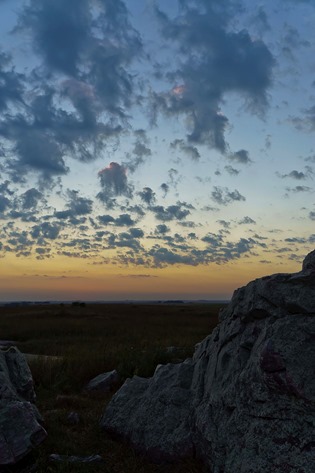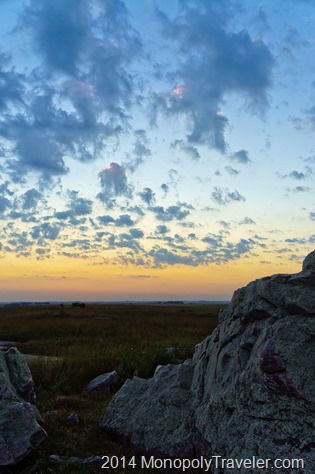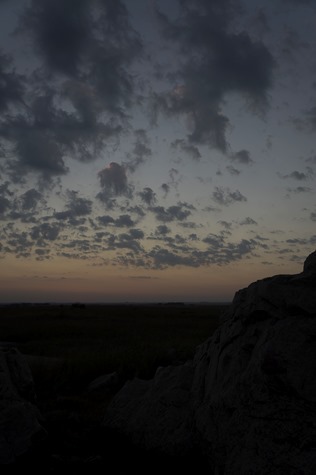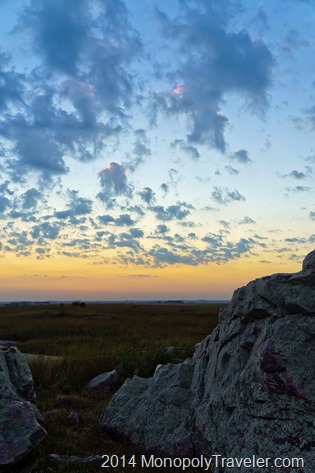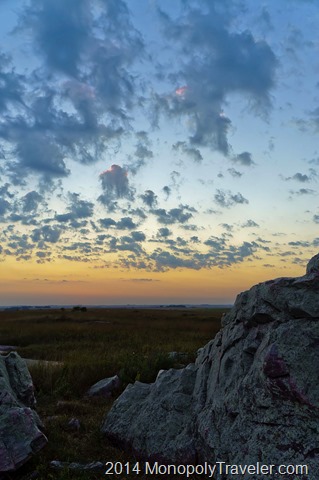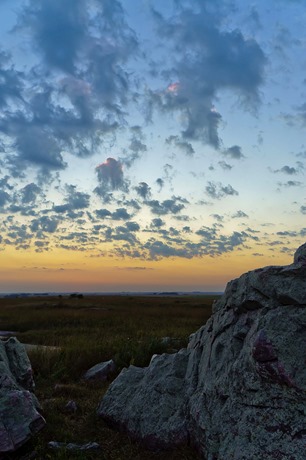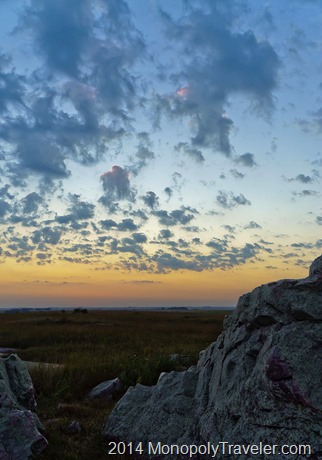As summer began to wind down I ventured off to Southwestern Minnesota in search of the Prairie Fringed orchid while hoping to view the Perseid meteor shower from a prairie landscape. Unfortunately I was unsuccessful at seeing much of either of these. On my last morning there a local herd of bison started to move closer to my location. What an unexpected surprise! While they were closer, they still were pretty far away for some nice photographs. Still I had envisioned photographing bison as they worked their way around the mounds of stone scattered across this part of the prairie before beginning this camping adventure. Now it seemed as though there was a possibility of capturing those shots. It was about time to tear down the campsite so I focused on that as the bison were still quite far away. With each trip of gear to the car I would check on the herd. Eventually I lost them and figured they had moved on to a further portion of their grazing area. With my equipment safely stored in my car I glanced up to see people looking at something. The bison had worked their way much closer. Observing their direction for a few minutes I grabbed the camera and found a safe place to set up for some potential photographs highlighting the huge animals against the beautiful pink quartz exposed above the prairie.
Sitting for what seemed like a long time a head poked up above the grass. And then another, and another until the entire herd was becoming visible. I chose a particular stone outcropping and just waited for these bison to work their way near it. As they meandered closer I began to get a little nervous. These are very large, powerful animals. While there was a fence between us, it would be quickly trampled through if these bison had motivation to run through it. There was one bison that seemed more nervous than the others and kept an eye on me. I kept an eye on that one too. At this point several of the bison were grazing near the rocks I had pointed the camera at. I began to shoot away trying different compositions and distances taking advantage of the situation. They continued to move and were out of my range pretty quickly and I figured I was done. Just waiting for them to be completely out of sight before I move back to my car.
While sitting there watching, the herd came back and once again surrounded the rock outcropping I was focused on. What luck and this time they approached from a different direction providing me with a few different compositions. Once again there was one of these bison which seemed to be watching me more closely than the others. Although this time is appeared to be more out of curiosity than concern as it would reach down to eat more frequently. This time they lingered in this area longer allowing me to not only get more photographs but to just watch from time to time. I was fascinated by all of the burs stuck to their noses. Do they feel them? Are they annoyed by them? How do they get removed from their noses?
Feeling more comfortable near these large animals this time it almost felt like I was among the herd. That’s when a photo session changes from great to an amazing experience. When they just continue on their mission like you’re not even there at close range. You get to see some of the details of an animal or its behavior not easily noticed from a distance. When you can hear their light grunts and catch a bit of their scent as they grab a mouthful of grass. It all tells more about an animal than looking at them from a distance. I may have missed the Perseids and failed to find a Prairie Fringed orchid but this encounter with a herd of bison made the weekend all worth any efforts needed for a weekend trip to the prairie.

